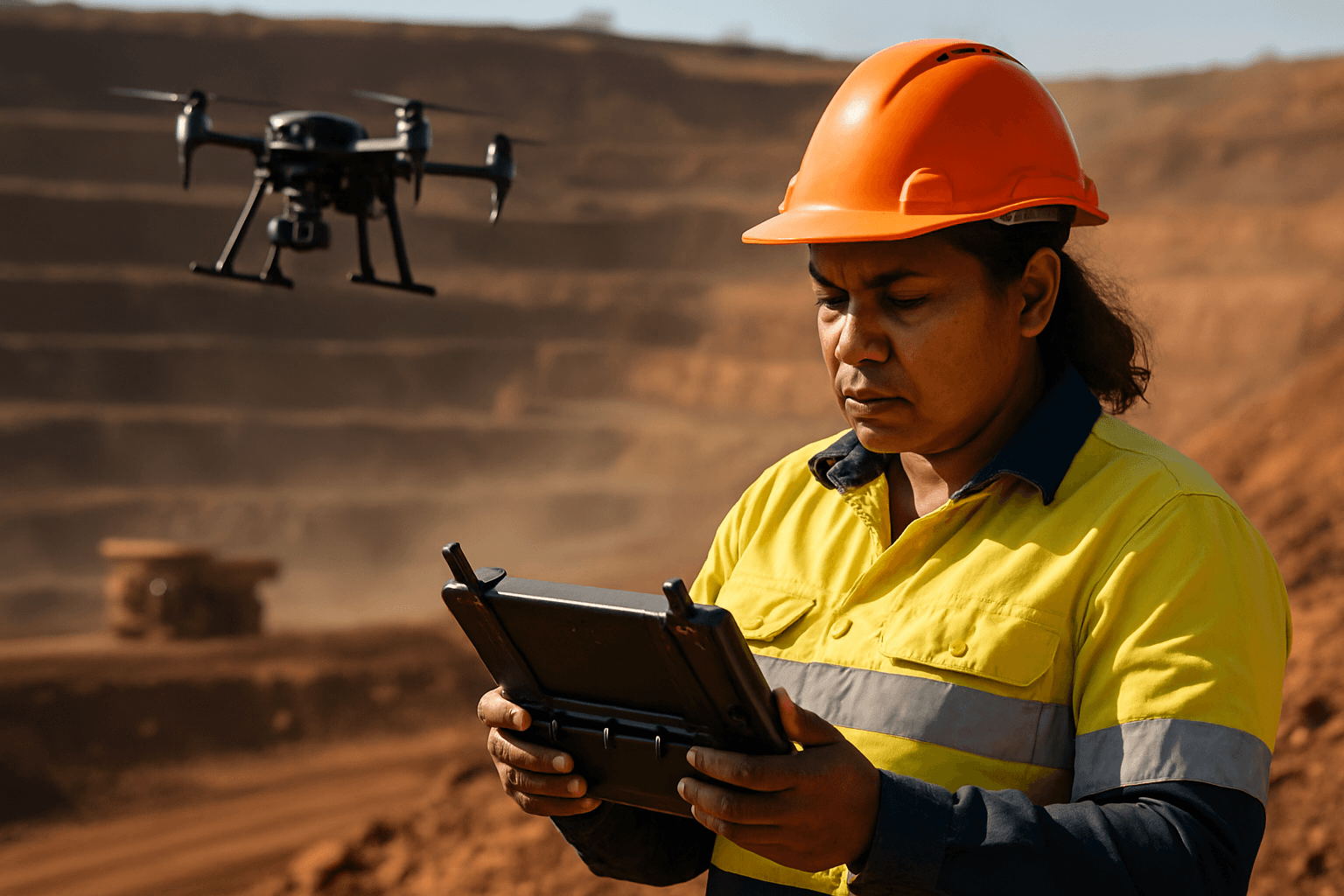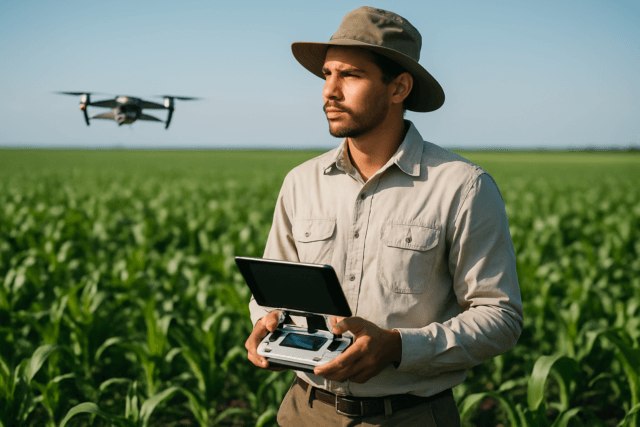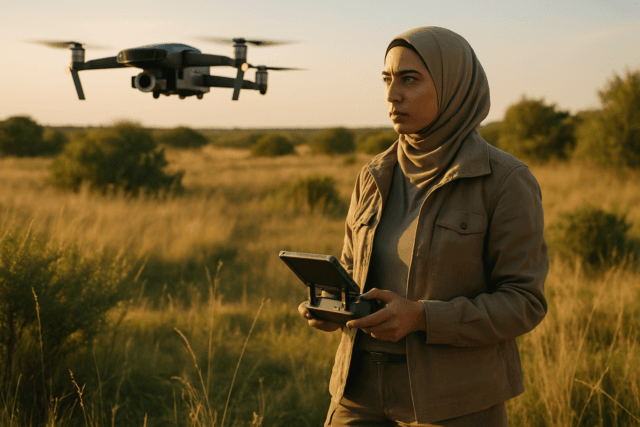Mining operations, often sprawling across vast, remote, and hazardous terrains, face significant challenges in securing their valuable assets and ensuring personnel safety. From monitoring equipment and inventory to safeguarding perimeters and managing environmental compliance, the sheer scale and inherent risks demand innovative solutions. Enter Unmanned Aerial Vehicles (UAVs), commonly known as drones, which are rapidly transforming asset protection strategies in the mining sector by offering unprecedented levels of efficiency, safety, and data accuracy.
The Imperative for Robust Asset Protection in Mining
Mining sites are complex environments, housing multi-million dollar machinery, extensive infrastructure, and valuable extracted materials. Traditional security methods, reliant on ground patrols and fixed surveillance, can be labor-intensive, costly, and often limited in their reach and effectiveness, especially in dynamic and dangerous areas. The harsh conditions, including unstable ground, deep pits, and underground tunnels, further complicate human-centric monitoring efforts.
How Drones Enhance Mining Asset Protection
Drones, equipped with advanced sensors like high-resolution cameras, LiDAR (Light Detection and Ranging), and thermal imagers, provide a versatile and dynamic platform for comprehensive asset protection. Their ability to access difficult or hazardous areas without risking human life is a primary driver for their adoption.
Perimeter Security and Site Surveillance
Large mining sites, with their extensive perimeters, are vulnerable to trespassing, theft, and unauthorized access. Drones can conduct autonomous security patrols, offering a continuous aerial overview of the entire site. They can detect unusual activity, alert personnel to potential threats, and provide real-time visual information, significantly enhancing the response capabilities of security teams.
Equipment Monitoring and Infrastructure Inspection
Valuable mining equipment, from colossal haul trucks to intricate conveyor belts and processing plants, requires constant monitoring for operational integrity and signs of wear and tear. Drones can perform detailed inspections of these assets, identifying structural issues or potential breakdowns before they lead to costly downtime. This extends to critical infrastructure like ventilation systems and even underground mine tunnels, where specialized drones with protective cages can navigate confined spaces and GPS-denied environments to collect crucial data on ground conditions and structural stability.
Stockpile Management and Inventory Monitoring
Accurate measurement of stockpiles is vital for inventory management and operational planning. Drones can rapidly and precisely calculate stockpile volumes, even for irregularly shaped or high piles, offering significant improvements over traditional manual methods. This not only ensures accurate accounting of extracted materials but also helps in monitoring the structural stability of these large formations to prevent accidents.
Environmental Monitoring and Compliance
Mining operations are subject to stringent environmental regulations. Drones play a crucial role in monitoring environmental impacts, such as tracking water and sediment flow, assessing land reclamation progress, and inspecting the stability of tailings dams. The ability to frequently collect high-resolution data allows companies to detect subtle changes, mitigate potential issues, and ensure compliance with environmental standards, thereby protecting both the environment and the company’s reputation.
Emergency Response and Hazard Identification
In the event of an emergency, such as a collapse, gas leak, or a missing person, drones can be rapidly deployed to assess the situation without endangering human responders. Equipped with gas sensors and thermal imaging, they can detect dangerous fumes or locate individuals in hazardous areas, providing critical real-time information to guide rescue efforts. Moreover, drones continuously help identify hazards like crumbling rocks, unstable ground, or ventilation issues, allowing for proactive measures to prevent accidents.
Key Advantages of Drone Deployment
The integration of drones into mining operations offers a multitude of benefits that extend beyond mere surveillance:
- Enhanced Safety: By reducing the need for human presence in hazardous areas, drones significantly minimize risks of accidents, injuries, and exposure to dangerous conditions like steep slopes, unstable ground, or harmful gases.
- Increased Efficiency and Speed: Drones can survey and inspect vast areas much faster than traditional ground-based methods, some reports indicating up to 30 times quicker. This allows for more frequent assessments, real-time data collection, and quicker decision-making.
- Cost-Effectiveness: Drones offer a more economical alternative to traditional surveying methods and manned aircraft, potentially reducing costs by up to 90% per hour compared to human-crewed flights. They reduce labor expenses, minimize downtime, and prevent costly incidents.
- Superior Data Quality and Accuracy: Drones capture high-resolution imagery, detailed 2D and 3D maps using LiDAR, and extensive datasets that provide a highly accurate and reliable basis for operational planning, geological assessments, and risk mitigation. They can access “blind spots” that traditional methods might miss.
- Remote Monitoring Capabilities: Drones enable remote monitoring and inspection, which is particularly beneficial for large, geographically dispersed mining sites, allowing for centralized oversight and rapid response.
Challenges and Considerations
Despite the clear advantages, the widespread adoption of drones in mining also presents certain challenges:
- Regulatory Hurdles: Drones are subject to intense scrutiny and regulation by aviation authorities globally. Companies must comply with local, state, and national regulations, securing appropriate licenses and permits for their operations.
- Environmental Conditions: Harsh mining environments, characterized by dust, extreme temperatures, humidity, and poor lighting, can affect drone performance and reliability. Signal propagation can also be a persistent problem, especially in underground mines where obstacles and infrastructure can absorb signals.
- Cybersecurity Risks: Drones can be vulnerable to hacking, potentially allowing unauthorized access to sensitive data or control of the drone itself. Robust security features and protocols are crucial.
- Battery Life and Endurance: While improving, battery life remains a limiting factor, especially for longer missions or in challenging conditions.
- Data Management and Integration: The sheer volume of data collected by drones requires robust data management systems and integration with existing operational platforms for effective analysis and decision-making.
- GPS-Denied Environments: Underground mines often lack GPS signals, requiring specialized drones equipped with advanced navigation systems (like LiDAR and computer vision) that can operate autonomously in such environments.
The Future of Drones in Mining Asset Protection
The future of drone deployment in mining is poised for even greater integration and sophistication. Key trends include:
- Autonomous Drone Fleets: Multiple drones working collaboratively in swarm formations to cover large areas with minimal human intervention.
- AI and Machine Learning Integration: AI-powered analytics will enhance anomaly detection, predict equipment failures, and optimize operational processes.
- Enhanced Battery Life and Hybrid Power Systems: Innovations in battery technology and the adoption of hybrid-powered drones will extend flight durations, enabling more thorough and continuous monitoring.
- Improved Sensor Technology: Further advancements in LiDAR, thermal imaging, multispectral, and hyperspectral sensors will provide even more detailed and actionable insights.
- Specialized Underground Drones: Continued development of collision-tolerant drones with advanced navigation for GPS-denied, confined, and hazardous underground environments.
Conclusion
Drones are no longer just a nascent technology in the mining sector; they are an indispensable tool revolutionizing asset protection. By offering unparalleled safety, efficiency, and data accuracy, UAVs address many of the inherent challenges of mining operations. While challenges related to regulations, environmental conditions, and technology integration persist, ongoing advancements promise an even more autonomous and intelligent future for drone-powered asset protection, leading to safer, more productive, and environmentally responsible mining practices.





